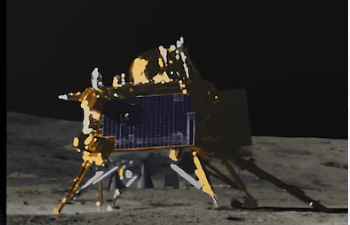Chandrayaan-3 Detects Historic 250 Seismic Signatures on Moon
India’s Chandrayaan-3 mission has achieved a significant milestone by becoming the first lunar mission to detect over 250 seismic signals from the Moon’s south pole since the Apollo missions. This discovery marks a major advancement in lunar exploration and seismic monitoring techniques.
Significance of Seismic Signals
The Chandrayaan-3 mission identified 250 seismic signals, with 50 of these signals being unique and potentially indicating moonquakes, which are similar to earthquakes on Earth but occur on the Moon. This is the first time that seismic data has been successfully collected from the Moon’s south pole, providing valuable insights into the Moon’s seismic activity.
Instrumentation and Data Collection
The Instrument for Lunar Seismic Activity (ILSA), which was part of the Vikram Lander, operated from August 24 to September 4, 2023. It recorded these seismic events from coordinates 69.37° S and 32.32° E. ILSA is notable for being the first instrument based on MEMS (Micro-Electro-Mechanical Systems) technology designed to measure seismic activity on the Moon, using advanced silicon micromachining techniques.
Nature of Detected Signals
Out of the 250 signals detected, around 200 were related to the activities of the mission itself. These included movements of the Pragyan rover and operations of scientific instruments like the ChaSTE thermal probe and the Alpha Particle X-ray Spectrometer (APXS). The remaining 50 signals were classified as “uncorrelated,” meaning they might be related to genuine moonquakes rather than mission-related activities.
Scientific Implications and Future Investigation
The findings from Chandrayaan-3 were published in ICARUS, a leading scientific journal. The study highlights a notable discovery: the longest continuous seismic signal recorded lasted 14 minutes. This opens up opportunities for further research to determine the origin of these uncorrelated signals. LEOS Director Sriram emphasized the importance of further exploration to fully understand these mysterious seismic events.
About Chandrayaan-3
Chandrayaan-3, launched by India on July 14, 2023, is the country’s third lunar mission, designed specifically to achieve a soft landing on the Moon’s surface. It consists of a lander named Vikram and a rover named Pragyan. Unlike its predecessor, Chandrayaan-2, it does not include an orbiter. The primary goal of Chandrayaan-3 is to demonstrate the ability to safely land and move on the Moon’s surface. It successfully landed on August 23, 2023, and is exploring the Moon’s south pole, a region considered crucial for future exploration.
Month: Current Affairs - September, 2024
Category: Science & Technology Current Affairs






